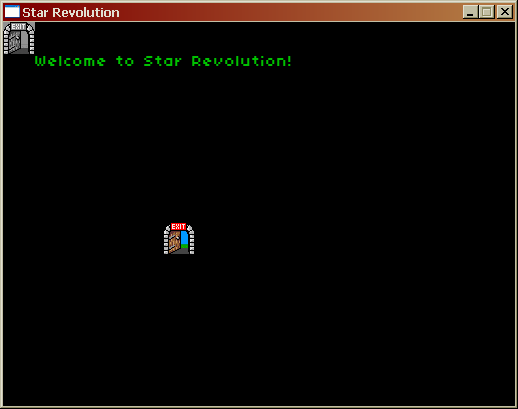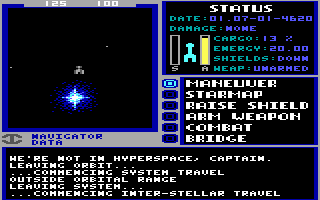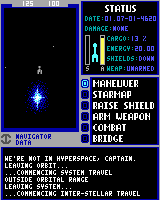The guys and gals at Bethesda made some interesting design choices when it came to Oblivion.
In particular, the stat and levelling system is…unique. Characters in Oblivion are defined by their stats and their skills. Skills go up as you use them, but stats can only be improved when you level. In most games, stats don’t change very often and really aren’t that important once character creation is done. Oblivion is the exact opposite – stats change every level, and it’s vital that you raise your stats quickly. Why?
Because how tough a monster is is based on your level. Thus, you can get a good ways into the game at level one because almost everything you fight will be “scaled” to match you. This explains how Greg Kasavin was able to go straight into several Oblivion gates and beat them during his playthrough – the game was limiting how strong his enemies could be based on his level.
You may think “Okay, then there’s no sense in levelling, since fights won’t get easier based on my level”. That’s not true, because there are many enemies in the game you won’t be able to beat unless you raise your stats – thus making your level 4 character more effective than the level 4 monster you are fighting.
Thus, it’s vital to get very large stat bonuses out of each level, especially at the beginning of the game. It’s especially vital to raise your Endurance stat as quickly as you can, since that stat governs how many more hit points you get every time you level up.
So how do you make sure you get large stat bonuses every level? You use skills based on that stat a lot. In order to get that magic +5 to Endurance when you level, you must gain ten points in Endurance-based skills. The easiest way to do that is to use the Armorer skill constantly, repairing your own weapons and armor and also repairing every bit of enemy equipment you find, even if you’re just going to drop it afterwards. The best way to get +5 on your Intelligence is to either use Mysticism magic a lot or do a lot of Alchemy.
What this means is that just going straight for the game’s dungeons and fighting everything in them will cause you level too fast – you’ll get to a new level without having gained ten points in a skill, so you don’t get that nice +5 bonus…you may just get some +2 or +3 bonuses. That’s not very effective levelling and it will come back to bite you in the ass if you do it a lot. Enemies will become more and more powerful and you just won’t be able to keep up. This system was specifically designed to punish powerlevellers.
Which means that you’re going to end up doing a lot of busywork to get your skills up between dungeon runs. You’ll make a bunch of potions, fix a bunch of armor, or cast a single spell over and over again. Only when you know you’ve got those nice +5 bonuses waiting for you will you go into a dungeon, fight and gain a level.
Now, that sounds like really poor design, and when I first read about how the system was structured I hated it. I also had to start over, since I hadn’t been levelling effectively enough.
But the system forced me to use many skills I otherwise wouldn’t have touched, like Alchemy. And I realized that those skills were really useful and…fun. The system forced me to try everything, and I discovered some stuff in the game that I liked that I otherwise would have missed. So…bad design? I initially thought so, but now I’m not so sure.
The real problem with this system is that Bethesda doesn’t tell you anywhere in the game or documentation that levelling quickly is bad, and that you should try to gain at least ten points in at least three minor skills before every level gain. That’s definitely bad. But now that I understand it, I’m having even more fun with the game than I was before.
For the record, here’s the custom character class I created:
PRAGMADIN
The Pragmadin is a pragmatic paladin. He is a holy warrior of light, capable of bashing the skulls of the wicked with his mace while simultaneously healing the faithful. He would never steal or do evil, but he does understand that sometimes it’s necessary to sneak around or pick a lock or two…for the good of all, of course.
Class focus: Combat
Favored stats: Strength, Endurance, Intelligence
Major skills: Blunt, Block, Heavy Armor, Restoration, Illusion, Destruction, Security
I play a male Imperial who was born under the sign of the The Warrior. This gives me a high starting Endurance – not the highest in the game, but I was willing to trade ten initial points of Endurance for the ability to be an effective spellcaster right away (Orcs and Redguards both have higher starting Endurance but have almost no magical ability to start).
Just about everything else in Oblivion is note-perfect. The game is gorgeous and runs well at high detail on my computer. The little minigames for subsystems like Speechcraft and Security are fun. The quest system works really well and seems bulletproof. The game does a good job of keeping track of all the info you accumulate during the game, with both local and world maps that update automatically, a journal and an active quest system. Combat is visceral and good maneuvering on your part can allow you to overcome an enemy who is technically more powerful than you. There’s also just a stupid-huge number of things that can happen to your character during the course of a game. Sell a certain artifact and you may be approached by a man who wants you to find more of them. Kill a vampire and you may get invited to join a clan of vampire hunters. Or you can become a vampire yourself.
Basically, it’s the best game I’ve played in years…and unless it finds a way to seriously kick me in the nuts, it could go down as the best game I’ve ever played, ever. We’ll see.




